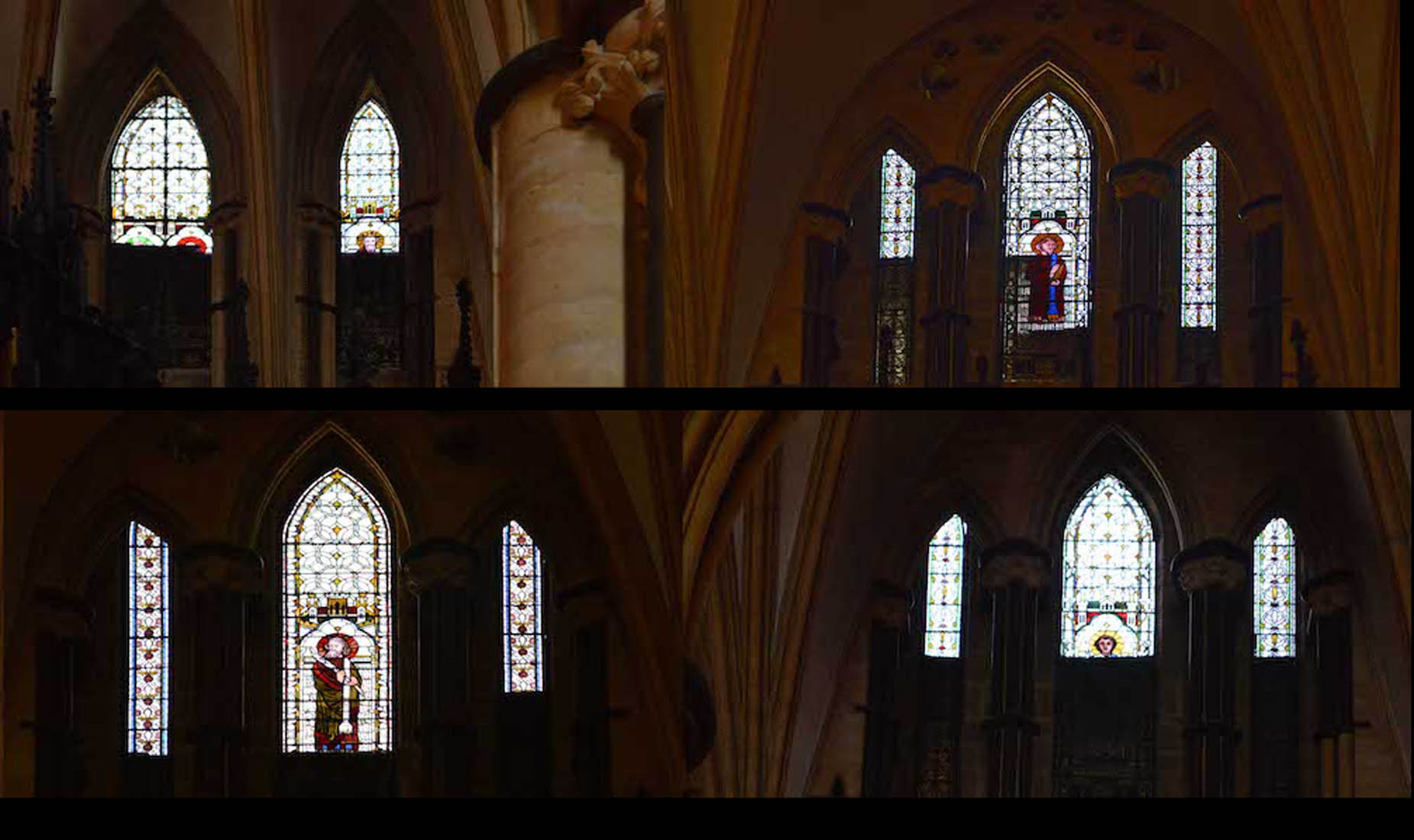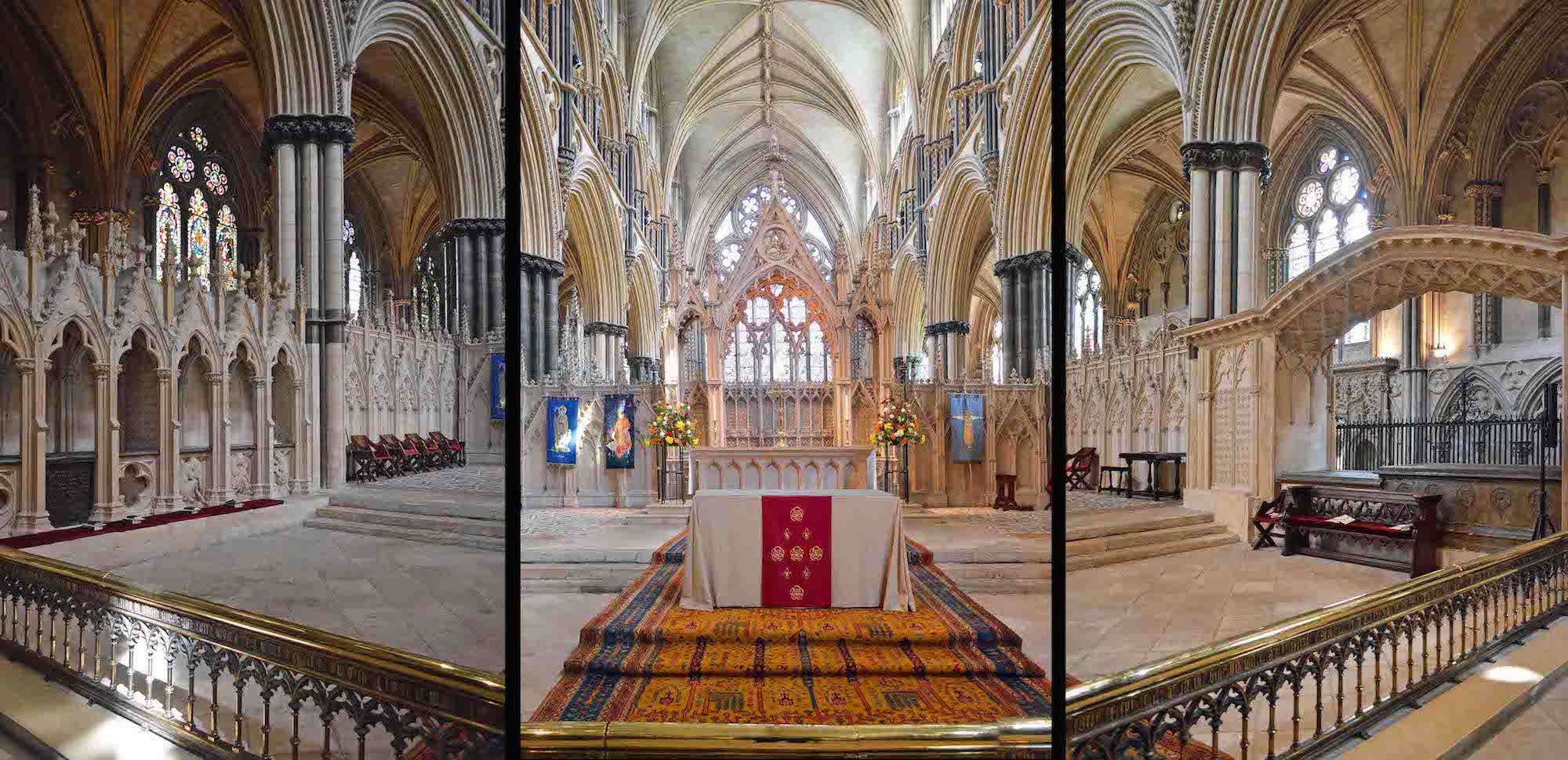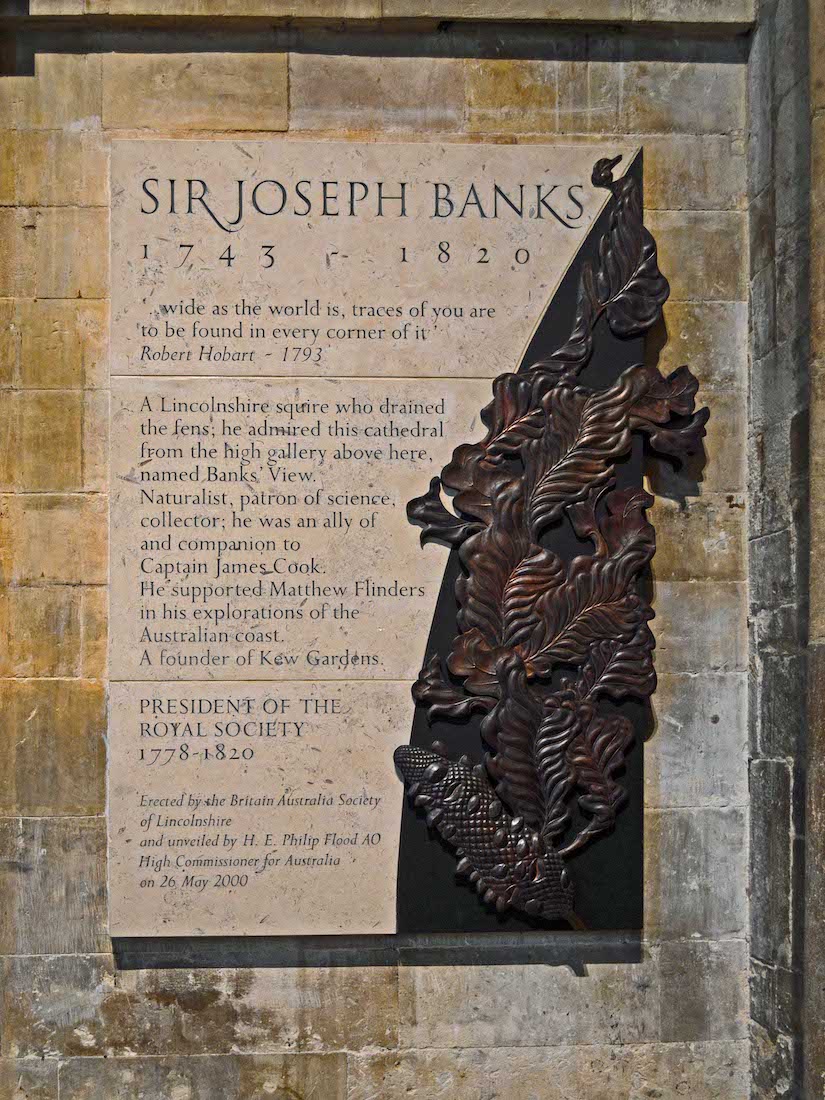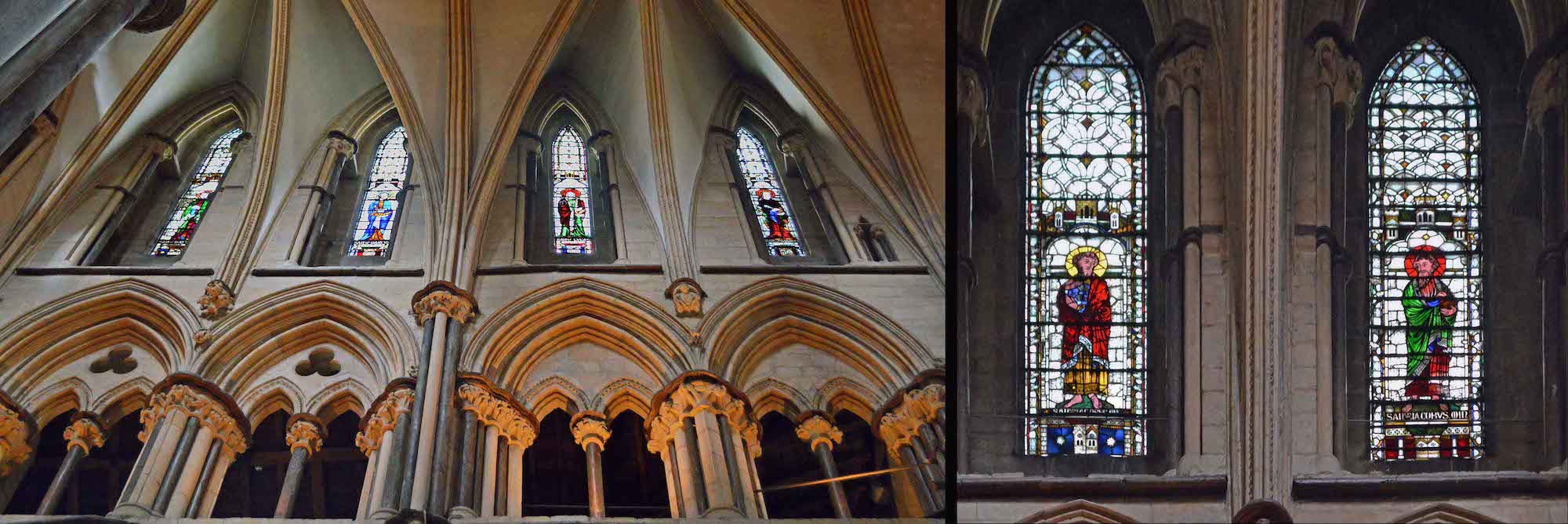
Before we approach the high altar, we should note the presence high above us of the clerestory windows. These belong to the North transept. It is a matter of some wonder that such time and effort was put into creating these objects of beauty which can only be seen with difficulty. But then, God can see them! . PLAN
122. SOUTH CLERESTORY WINDOWS
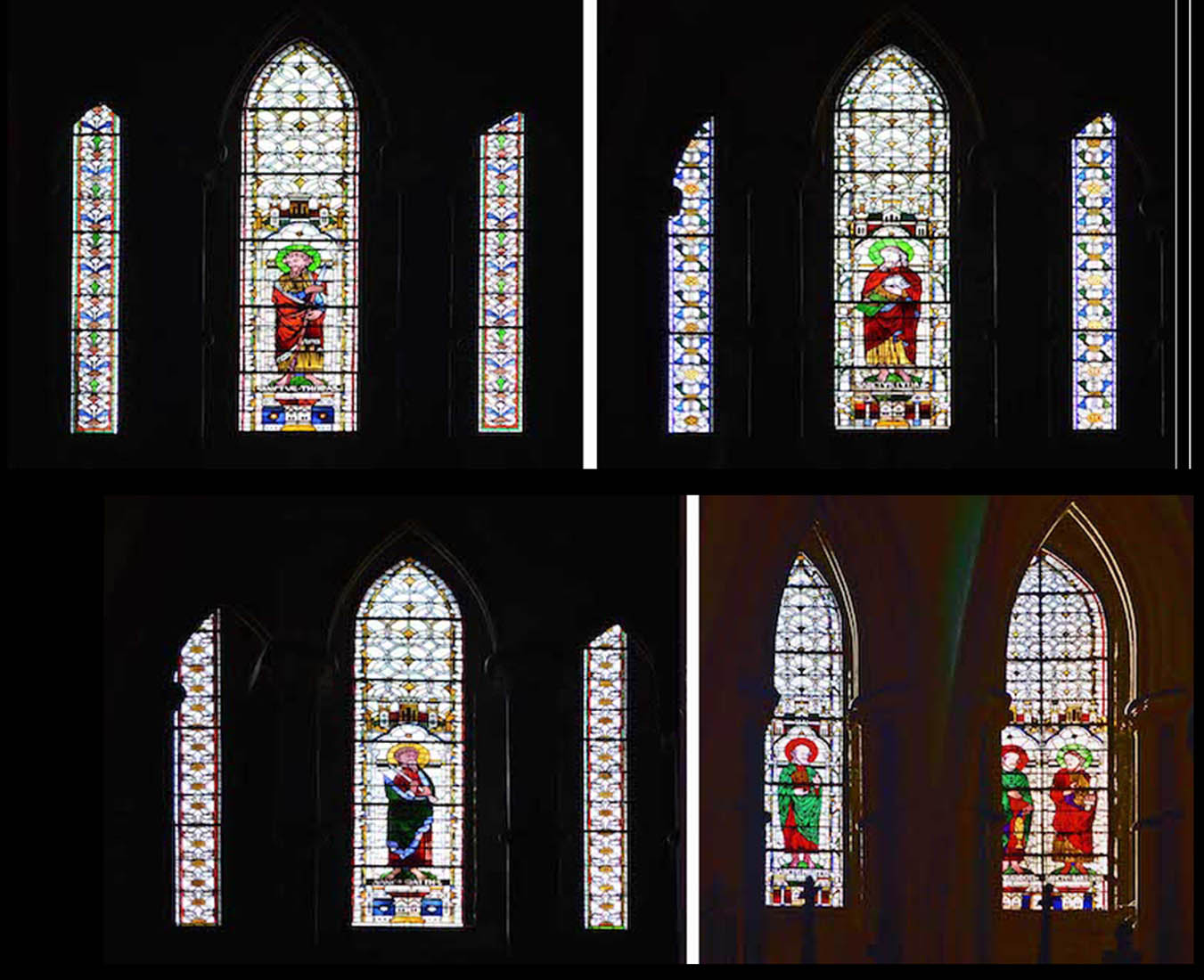
Further clerestory windows can be found along both sides of the choir. These are located on the South side ... . Pictured here (from left) are: St Thomas, St Jude, St Matthew, St Philip, St Simon and St Bartimaeus.
123. NORTH CLERESTORY WINDOWS
There are more windows located on the North side. No names are visible here, and in fact a number of the windows are partly covered.
125. BACK WALL OF SANCTUARY
The blue banner at left shows St. Hugh of Lincoln, Protector of the Oppressed, born in Avalon, France about 1140. He is often depicted with the goose that followed him around in one town in the diocese. The second banner shows an unknown lady with a goose, perhaps with the image of Lincoln Cathedral behind. The banner at right shows a Kingly Christ in the crucified position.
126. JOSEPH BANKS MEMORIAL
As we leave the glory of Lincoln Cathedral we pass this reminder of Sir Joseph Banks (1743 – 1820), a Lincolnshire squire who drained the fens and who admired the Cathedral from the high gallery. Banks is famous as a naturalist, patron of science, collector, explorer. Here is a reminder of the links between God and man, Church and world, spiritual and natural. This completes our tour of Lincoln Cathedral.
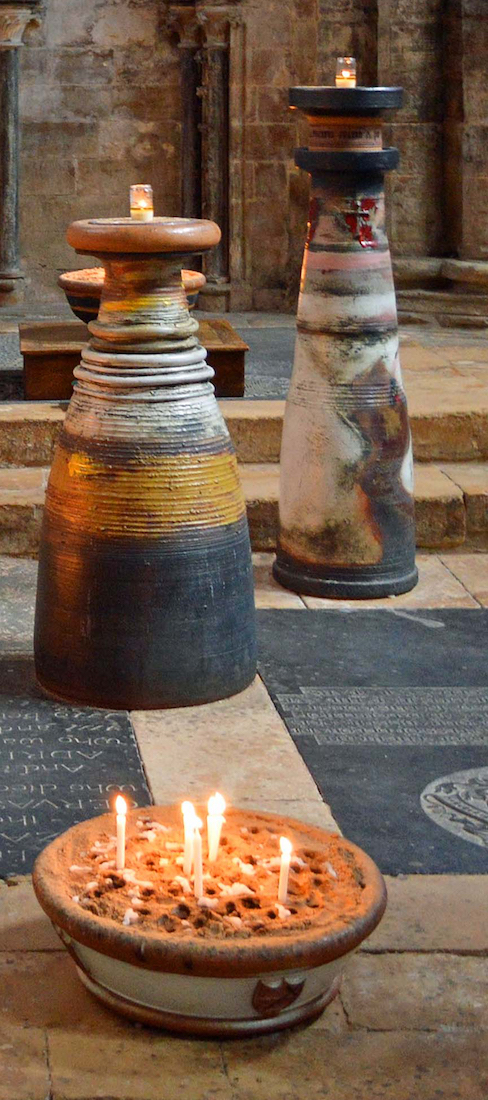
CONCLUSION
I have found Lincoln Cathedral one of the most interesting of the English cathedrals. Our experience included a Pentecost service with fire engines appearing!
I am happy to receive constructive comments or corrections concerning this website. The best websites are the ones which have no errors! There are also a number of missing pieces of information. If anyone can supply additional detail, I would be glad to hear from you. I am grateful to my wife Margie who came to Lincoln with me, and who has proof-read these pages.
The text on this site is drawn from many sources. In particular I wish to acknowledge Wikipedia, several publications of Lincoln Cathedral, the website
and the Lincoln Cathedral website
My photographs which appear on this site can also be found in higher resolution at:
https://www.flickr.com/photos/paulscottinfo/sets/
Paul Scott Site created 10 / 2016 reformatted 04 / 2020

